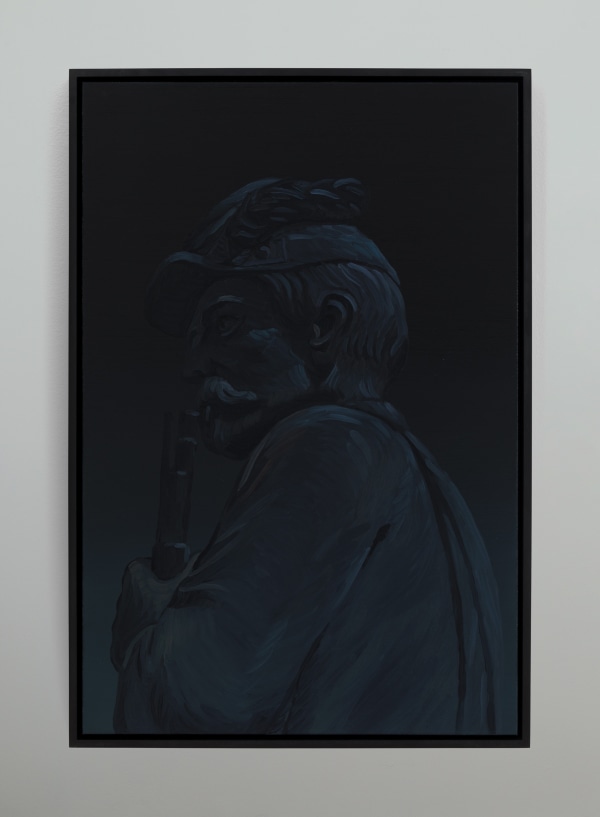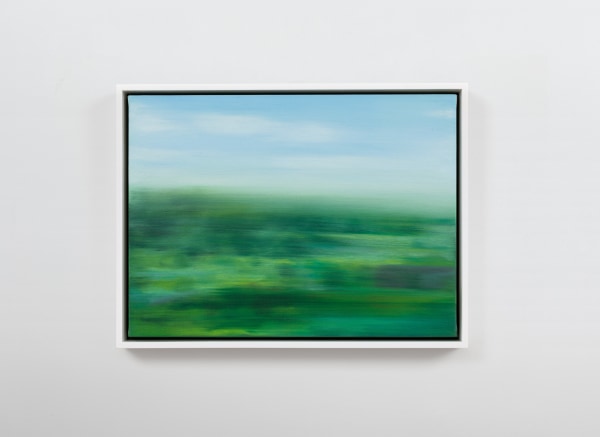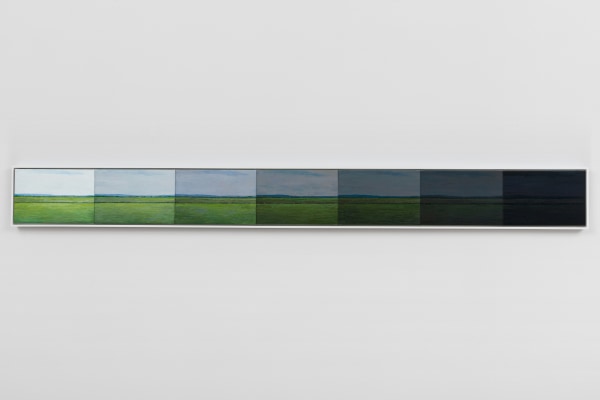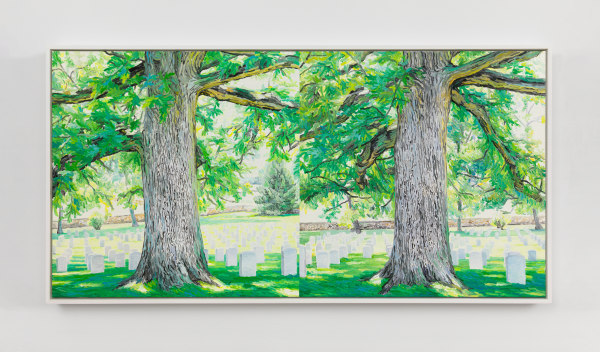Cynthia Daignault: As I Lay Dying
Past exhibition
-
-
Cynthia Daignault’s (b. 1978) first solo exhibition at the gallery explores the subject of Gettysburg National Military Park to propose a contemporary response to the genre of history painting. On view through January 8, 2022, the exhibition expands on themes explored in the artist’s earlier Light Atlas and Elegy series, investigating concepts of monument, memory, and the shifting experience of the natural world.
-
As I Lay Dying includes wide-ranging depictions of the battlefields and woodlands of the park, as well as paintings of text drawn from Lincoln’s historic address, and ghostly nocturnes of Civil War monuments. Daignault’s approach is a rumination on the meaning of site and time—time elapsed since the battle, time spent walking its fields, and time shared between the viewer and the work.
-

-
History painting, for Daignault, is an act of poetry. In this, her approach recalls the work of Felix Gonzalez-Torres, who engaged with political history through the creation of quiet, specific and powerful metaphors. Just as in an imagist poem, each work here is a concrete, uncluttered response to the pathos of Gettysburg. As I Lay Dying explores personal and political American paradoxes—beauty and horror, love and cruelty, idealism and sin—and its works formally reflect these binaries—north and south, black and white, warm and cool. One work in the exhibition is stereoscopic; two panels depict left and right-eye views of the memorial cemetery, exploring concepts of parallax, shifting perspective, and multipartite narratives. These oppositional dualities ground the show, rooted in the central contradiction between the land and its historical context: Gettysburg has a banal and prosaic landscape that belies the bloody battles fought on its soil.
-

-
For Daignault landscape is witness, and she draws parallels between the environmental setting and the mechanical act of seeing. Her investigation into optics further acts as a metaphor for the polarities at the heart of American life and the reverberations of historical trauma. Gettysburg (witness tree), depicts a scene from her walks in the park: one of the few remaining civil war witness trees—a tree standing at the battle and still alive today. In the lineage of artists such as Richard Long, Daignault asks us to walk with her in order to learn how, or from which vantage point, we might better understand the past.
-

-
Works
-
About the Artist
 Photo: Curran Hatleberg, courtesy of Cynthia Daignault
Photo: Curran Hatleberg, courtesy of Cynthia Daignault -
Explore
-

Alexis Ralaivao: Éloge de l’ombre (In Praise of Shadows)
May 15 – July 25, 2025 509 West 27th Street, New YorkFor Éloge de l’ombre (In Praise of Shadows), Ralaivao unveils a suite of new paintings rendered entirely in black and white. Working within the self-imposed parameters of a reduced palette,... -

Theodora Allen: Oak
May 7 – July 25, 2025 297 Tenth Avenue, New YorkAllen’s atmospheric oil paintings on linen depict natural phenomena and symbols chosen for their enduring presence in human history and culture, often drawing from mythology and medieval imagery. From hearts... -

Alma Allen on Park Avenue
May 2 – September 30, 2025In Alma Allen's largest outdoor installation to date, ten unique bronze and onyx sculptures including examples reaching over 10 feet tall and realized especially for the exhibition, are on view...
-
















